Related Research Articles

The Acari are a taxon of arachnids that contains mites and ticks. The diversity of the Acari is extraordinary and their fossil history goes back to at least the early Devonian period. Acarologists have proposed a complex set of taxonomic ranks to classify mites. In most modern treatments, the Acari are considered a subclass of the Arachnida and are composed of two or three superorders or orders: Acariformes, Parasitiformes, and Opilioacariformes; the latter is often considered a subgroup within the Parasitiformes. The monophyly of the Acari is open to debate, and the relationships of the acarines to other arachnids is not at all clear. In older treatments, the subgroups of the Acarina were placed at order rank, but as their own subdivisions have become better understood, treating them at the superorder rank is more usual.

George Ord was an American zoologist who specialized in North American ornithology and mammology. Based in part on specimens collected by Lewis and Clark in the North American interior, Ord's article "Zoology of North America" (1815), which was published in the second American edition of William Guthrie's Geographical, Historical, and Commercial Grammar, has been recognized as the "first systematic zoology of America by an American".

The Pacific swift is a species of bird that is part of the Swift family. It breeds in eastern Asia. It is strongly migratory, spending the northern hemisphere's winter in Southeast Asia and Australia. The general shape and blackish plumage recall its relative, the common swift, from which it is distinguished by a white rump band and heavily marked underparts. The sexes are identical in appearance, although young birds can be identified by pale fringes to the wing feathers that are absent in adults. This swift's main call is a screech typical of its family. It is one of a group of closely related Asian swifts formerly regarded as one species.
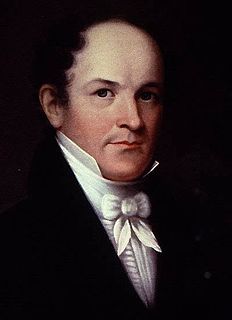
Thomas Nuttall was an English botanist and zoologist who lived and worked in America from 1808 until 1841.

Tetranychus urticae is a species of plant-feeding mite generally considered to be a pest. It is the most widely known member of the family Tetranychidae or spider mites. Its genome was fully sequenced in 2011, and was the first genome sequence from any chelicerate.

Thomas Say was an American entomologist, conchologist, and herpetologist. His definitive studies of insects and shells, numerous contributions to scientific journals, and scientific expeditions to Florida, Georgia, the Rocky Mountains, Mexico, and elsewhere made him an internationally known naturalist. Say has been called the father of American descriptive entomology and American conchology. He served as librarian for the Academy of Natural Sciences of Philadelphia, curator at the American Philosophical Society, and professor of natural history at the University of Pennsylvania.
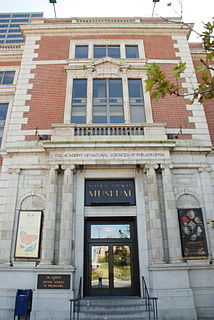
The Academy of Natural Sciences of Drexel University, formerly the Academy of Natural Sciences of Philadelphia, is the oldest natural science research institution and museum in the Americas. It was founded in 1812, by many of the leading naturalists of the young American republic with an expressed mission of "the encouragement and cultivation of the sciences". For over two centuries of continuous operations, the Academy has sponsored expeditions, conducted original environmental and systematics research, and amassed natural history collections containing more than 17 million specimens. The Academy also has a long tradition of public exhibits and educational programs for both schools and the general public.
Gerrit Smith Miller Jr. was an American zoologist and botanist.
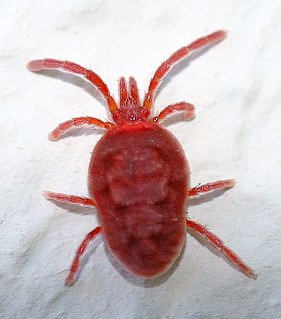
The Acariformes, also known as the Actinotrichida, are the most diverse of the two superorders of mites. Over 32,000 described species are found in 351 families, and an estimated total of 440,000 to 929,000 species occur, including undescribed species.

Henry Augustus Pilsbry was an American biologist, malacologist and carcinologist, among other areas of study. He was a dominant presence in many fields of invertebrate taxonomy for the better part of a century. For much of his career, his authority with respect to the classification of certain substantial groups of organisms was unchallenged: barnacles, chitons, North American terrestrial mollusks, and others.

The ash-throated flycatcher is a passerine bird in the tyrant flycatcher family. It breeds in desert scrub, riparian forest, brushy pastures and open woodland from the western United States to central Mexico. It is a short-distance migrant, retreating from most of the U.S. and northern and central Mexico, spending the winter from southern Mexico to Honduras. This bird is also prone to wander, with single birds often seen outside its normal breeding range as far away as the east coast of North America.
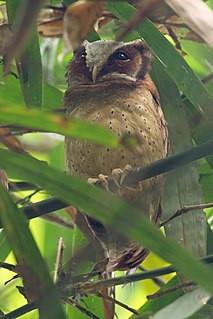
The white-fronted scops owl is a small Asian owl in the family Strigidae. It has a small and declining population about which little is known, and is dependent on lowland and foothill forests which are rapidly being destroyed. This species of owl is considered vulnerable and has a population of about 2,500–10,000. Its range covers 149,000 km2 (58,000 sq mi) of forest at altitudes of 0–700 m (0–2,297 ft) above sea-level.

The Proctophyllodidae are a family of the Acarina (mite) order Astigmata. They contain many feather mites. The Alloptidae and Trouessartiidae were in earlier times included here as subfamilies.

William Tufts Brigham (1841–1926) was an American geologist, botanist, ethnologist and the first director of the Bernice P. Bishop Museum in Honolulu.
Feather pillow dermatitis is a rash caused by bites of the mite Dermatophagoides scheremetewskyi.
Chauliacia securigera is a feather mite found on swifts.

Eustathia cultrifera is a feather mite found on swifts.
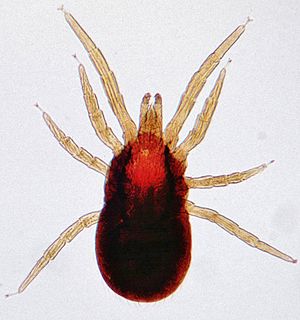
Mites are small crawling animals related to ticks and spiders. Most mites are free-living and harmless. Other mites are parasitic, and those that infest livestock animals cause many diseases that are widespread, reduce production and profit for farmers, and are expensive to control.

The conservation and restoration of feathers is the practice of maintaining and preserving feathers or featherwork objects, and requires knowledge of feather anatomy, properties, specialized care procedures, and environmental influences. This practice may be approached through preventive and/or interventive techniques.

Glyphanoetus is a genus of astigs in the family Histiostomatidae.
References
- ↑ Peterson, Paul; Atyeo, Warren T; Moss, W Wayne (2007). Feather Mite Family Eustathiidae (Acarina: Sarcoptiformes): Monographs of The Academy of Natural Sciences of Philadelphia, No. 21. Philadelphia: Academy of Natural Sciences. p. 136. ISBN 142231927X.